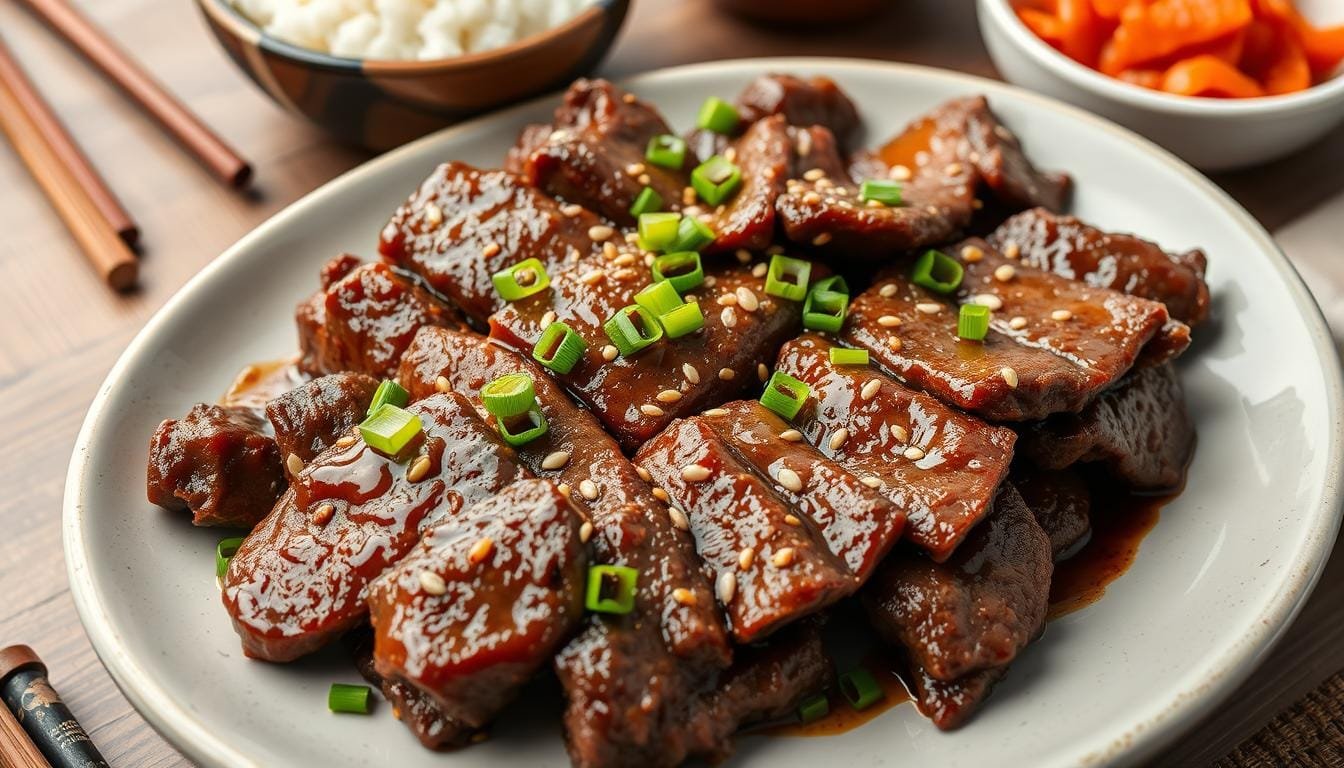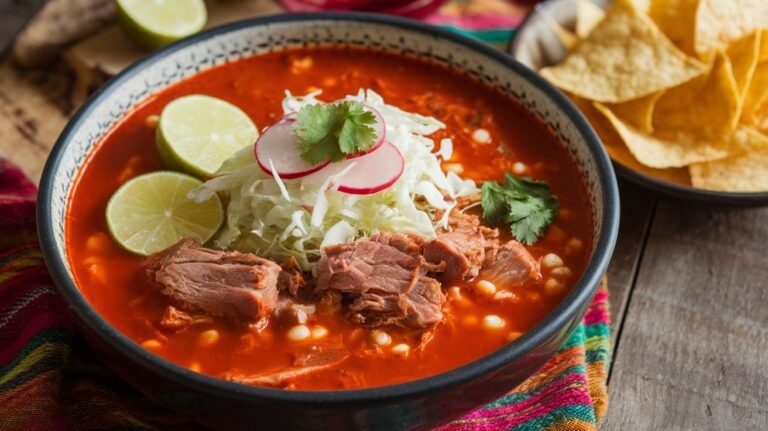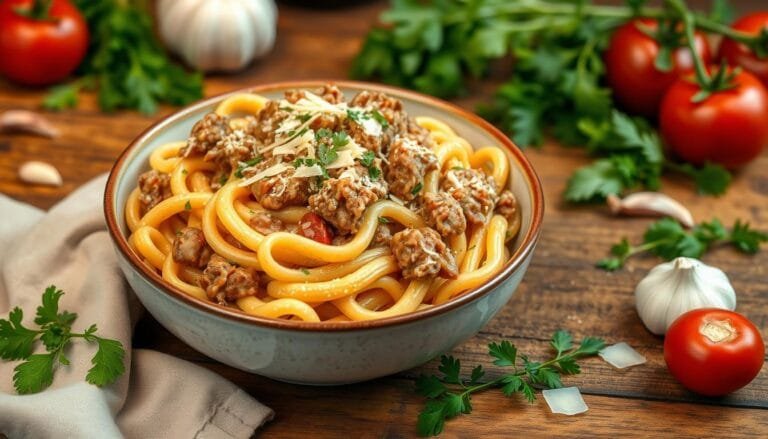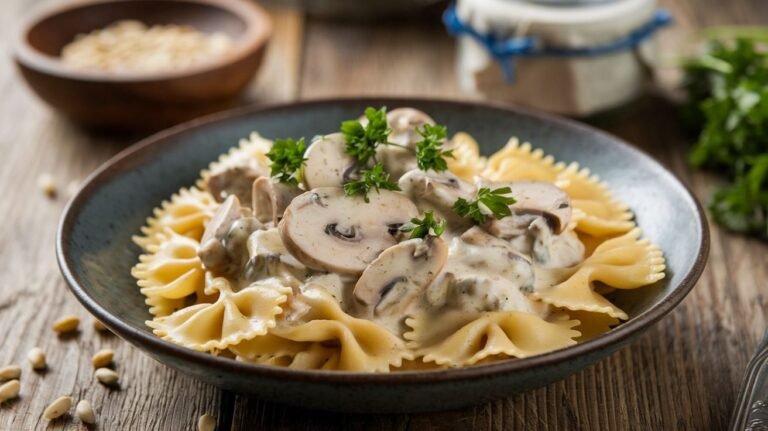Korean Beef
The smell of Korean Beef in the kitchen brings back happy memories. I first tried bulgogi at a small Korean place in my area. It was so juicy and full of flavor, sweet and savory at the same time.
Korean food is special to me, and Korean Beef recipes show its beauty. They show the skill and love in Korean cooking.
In this article, we’ll explore what makes Korean Beef so unique. We’ll look at its cultural importance and how to make it at home. Korean Beef is more than food; it’s a way to share joy with others. Let’s explore how to make delicious Korean Beef dishes together!
Introduction to Korean Beef Dishes
Korean Beef Dishes are a joy to explore. They show the rich flavors of Korean food. Bulgogi and galbi are great examples of tasty Korean meats.
Beef is often marinated before cooking. This makes it even more delicious. Soy sauce, sesame oil, and garlic add a savory flavor.
Korean Beef Dishes are more than food. They bring families together. At BBQs or special events, they share a sense of tradition.
These dishes tell a story of Korean culture. They show values of hospitality and culinary creativity.
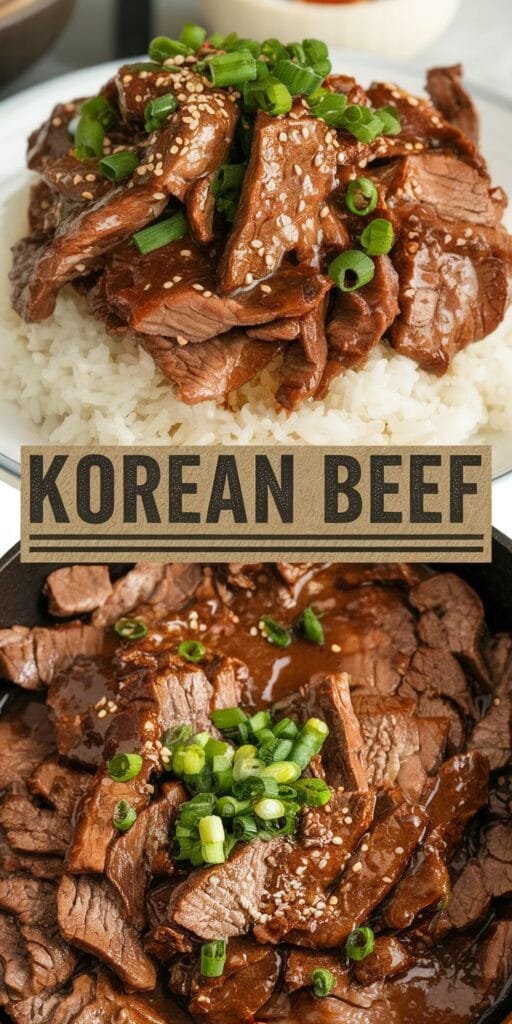
What Makes Korean Beef Unique?
Korean Beef is special because of its unique flavors of Korean Beef. These flavors come from old traditions and new ideas in cooking. The choice of cuts of beef, like sirloin and brisket, is key. These cuts soak up marinades well, making the beef taste great.
The marinades are what make Korean Beef taste so good. They use gochujang, a spicy paste, and honey. Honey adds sweetness to balance the heat. This mix makes the beef taste amazing.
Every region in Korea adds its own twist to the beef. It can be cooked in a hot pot or grilled. The unique flavors of Korean Beef make every meal special. Korean cooking is all about enjoying the flavors, the process, and the ingredients.
Korean Beef Bowls: A Delicious Meal Idea
Korean Beef Bowls are a favorite of mine for easy meals. They taste great and are easy to make. They’re perfect for quick dinners on busy nights. Here’s what you need and how to make this tasty dish easily.
Ingredients for a Perfect Beef Bowl
- 500g marinated Korean beef (such as bulgogi)
- 2 cups cooked white or brown rice
- 1 cup broccoli florets
- 1 cup sliced carrots
- 1 bell pepper, sliced
- 1 tablespoon sesame oil
- 1 tablespoon soy sauce
- Chopped green onions for garnish
- Sesame seeds for garnish
Step-by-Step Preparation Guide
- Start by cooking your rice as the package says.
- In a skillet, heat sesame oil over medium heat. Add the marinated beef. Cook until browned and done, about 5-7 minutes.
- Add broccoli, carrots, and bell pepper to the skillet. Stir often until they’re tender, about 3-5 minutes.
- When the veggies are done, add soy sauce. Stir to mix all the flavors.
- Put your Korean Beef Bowls together. Spoon rice into bowls and top with beef and veggies.
- Finish with chopped green onions and sesame seeds for extra flavor.
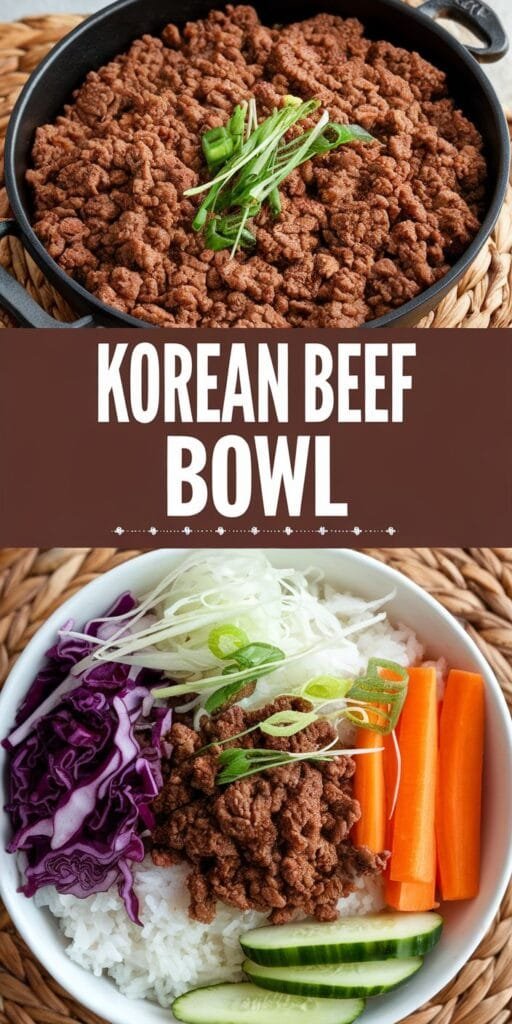
Easy Asian Recipes Featuring Korean Beef
Exploring Easy Asian Recipes with Korean Beef is fun. I like using quick stir-frying to save time and bring out the meat’s rich flavors. This way, anyone can make tasty and easy meals.
I also enjoy trying new Korean Beef recipes. Adding my own twist makes the dish even better.
Quick Stir-Fry Techniques
Stir-frying Korean Beef makes it juicy and full of flavor. Here are some quick tips:
- Use high heat to sear the beef quickly.
- Slice the beef thinly against the grain for tenderness.
- Marinate the beef for at least 30 minutes to boost flavor.
- Incorporate a variety of colorful vegetables for added nutrition.
Creative Variations on Classic Recipes
Let your creativity shine with these Korean Beef variations:
- Korean Beef Tacos: Use tender beef slices in soft tortillas with kimchi and spicy mayo.
- Korean Beef Stir-Fry with Noodles: Toss cooked noodles with stir-fried beef and veggies, then add sesame dressing.
- Spicy Korean Beef Salad: Mix marinated beef with fresh greens and a zesty vinaigrette.
Sweet Spicy Beef: The Flavors of Korea
Sweet Spicy Beef is full of the bold tastes found in Korean dishes. It mixes sweet and spicy in a way that’s both tasty and true to Korean taste. Brown sugar and gochujang make each bite a special treat.
To get this amazing flavor, marinating is key. Use a mix of brown sugar, gochujang, minced garlic, and soy sauce. This makes the beef tender and full of flavor. Let it marinate for at least thirty minutes.
- Brown sugar adds a rich sweetness.
- Gochujang introduces heat and depth.
- A splash of sesame oil can enhance the nuttiness.
- Minced garlic brings an aromatic kick.
After marinating, grill or stir-fry the beef for caramelization. The sweet spicy glaze is irresistible. Serve it over rice or with stir-fried veggies for a full meal.
| Ingredient | Role in Flavor |
|---|---|
| Brown Sugar | Adds a rich sweetness |
| Gochujang | Provides heat and depth |
| Sesame Oil | Enhances nuttiness |
| Minced Garlic | Offers an aromatic kick |
Try different amounts of these ingredients to make it your own. Sweet Spicy Beef is a joy to eat, full of flavors that take you to Korea.
Pairing Korean Beef with Side Dishes
When you eat Korean beef, the right side dishes make it even better. Korean side dishes add flavor to beef and make meals special. I love both old favorites and new twists that bring freshness to our plates.
Traditional Korean Sides to Enhance the Meal
Traditional Korean sides are key to making beef dishes better. Here are some favorites:
- Kimchi: This spicy, fermented cabbage is a must. It’s tangy and pairs well with beef.
- Pickled Radish: Known as “danmuji,” it’s crunchy and sweet. It balances the richness of beef.
- Japchae: Sweet potato noodles stir-fried with veggies are chewy and tasty. They match beef well.
Modern Twists on Side Pairings
Modern takes on sides can make beef meals exciting. Here are some ideas:
- Quinoa Salad: A protein-rich side with a nutty taste. It makes the dish healthier.
- Roasted Vegetables: Seasonal veggies with soy sauce and sesame oil are savory and warm. They complement beef well.
- Grain Bowls: Rice or barley with greens and a light dressing are fresh and vibrant. They offer creative pairings.
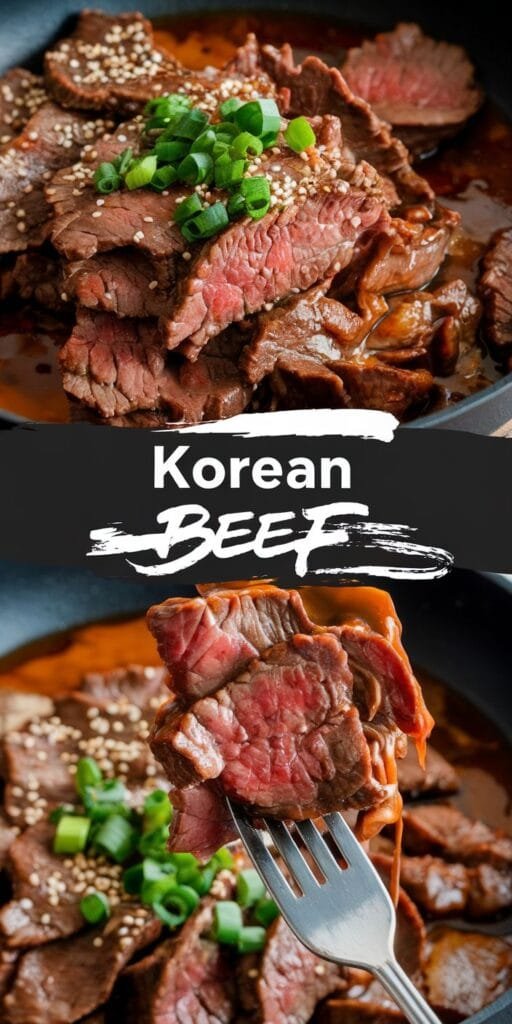
Healthy Modifications to Korean Beef Recipes
I love making Korean beef dishes healthier. It’s easy to keep the flavor by making small changes. Using lean beef and fresh veggies makes my meals better for me.
Using Lean Cuts of Beef
Choosing lean beef is key for healthy meals. Sirloin, tenderloin, or flank steak are great choices. They taste amazing but have less fat.
This way, I can enjoy my favorite dishes without feeling bad.
Incorporating Fresh Vegetables
Fresh veggies make any Korean beef recipe better. Bell peppers, broccoli, or bok choy add color and nutrients. I toss them in stir-fries or serve them with beef bowls.
| Ingredient | Benefits | Example Dish |
|---|---|---|
| Lean Cuts of Beef | Lower in fat and calories | Stir-fried Beef and Vegetables |
| Broccoli | Rich in fiber and vitamins | Korean Beef Bowl |
| Bell Peppers | High in antioxidants and vitamin C | Beef and Pepper Stir-Fry |
| Bok Choy | Low in calories and nutrient-dense | Beef and Bok Choy Soup |
These changes make my meals better and healthier. By using lean beef and veggies, I make tasty, wholesome dishes.
The Best Cooking Techniques for Korean Beef
Preparing Korean Beef can be a fun adventure. Grilling is a top choice because it adds a smoky taste and a nice char. A good marinade makes the beef even better, blending flavors perfectly.
Marinating is key for tender and tasty Korean Beef. I mix soy sauce, sesame oil, garlic, and ginger for a tasty marinade. The beef absorbs more flavor the longer it marinates, from 30 minutes to 24 hours.
Stir-frying is another quick way to cook Korean Beef. Cutting the beef right can make it tender. Cooking fast at high heat keeps the meat juicy and adds a great sear. Adding veggies makes the dish colorful and tasty.
Braising is great for slow cooking. It makes tough cuts tender and flavorful. This method uses a rich broth, perfect for bulgogi or jjigae.
Choosing the best cooking method for Korean Beef depends on what you like. Trying different grilling and marinating ways can lead to amazing meals.
Tips for Cooking Korean Beef at Home
Cooking Korean Beef at home can be fun. You need the right tools to make it easy. Good kitchen equipment helps a lot. I’ll tell you what tools you need and common mistakes to avoid.
Essential Tools and Equipment
Right tools make Korean Beef taste better. Here are the must-haves:
- Wok: It’s best for stir-frying, keeping heat even.
- Grill Pan: It gives a charred taste like Korean BBQ.
- Rice Cooker: You need it for perfect rice with beef.
- Marinade Container: Use a non-reactive one to keep flavors.
- Sharp Knives: They help cut meat and veggies well.
Common Mistakes to Avoid
Even experts can make mistakes with Korean Beef. Here are some to watch out for:
- Overcooking: It makes the beef tough. Watch cooking time closely.
- Ignoring Marinating Time: Don’t skip or shorten it. It adds flavor.
- Using Wrong Cuts of Beef: Choose ribeye or flank steak for the best taste.
- Piling Ingredients: Cooking too much at once lowers temperature. Cook in batches.
With these tips, cooking Korean Beef will be fun and rewarding. The right tools and avoiding mistakes lead to great results.
Where to Find Authentic Korean Beef Ingredients
When you want to make tasty Korean beef dishes, finding real Korean ingredients is important. I like to go to local Asian markets. They have fresh beef and special seasonings like gochujang and soy sauce.
These stores are full of flavors you can’t find elsewhere. It’s a fun way to try new things.
If I can’t go to a market, I look online. Websites for Korean and Asian food deliver great ingredients to my door. It’s easy to get what I need without leaving home.
I also look for special Korean beef brands. Choosing good brands means my beef is top quality. This makes my cooking taste like it’s from a restaurant.
